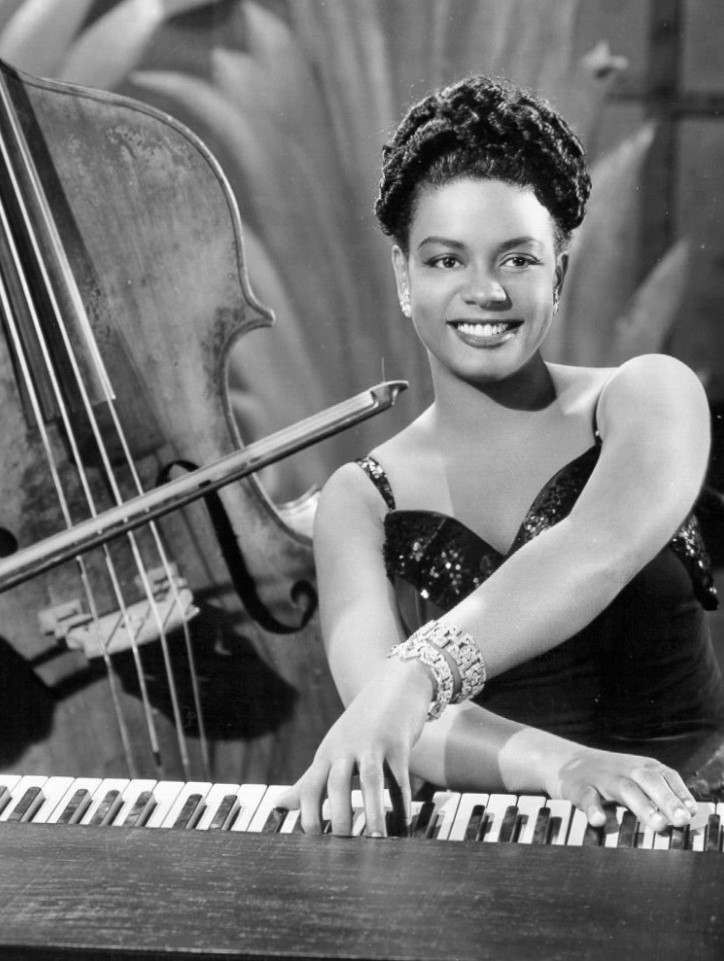Knowing that Black roles were overwhelmingly dehumanizing caricatures, Scott made it understood that she would choose dignification over employment in Hollywood.
“[F]rom bad to worse and from degradation to dishonor—so went the story of the Black American in Hollywood.” [1]
Scott’s success attracted many film offers.
“I’ve turned down four singing maid roles in movies during the past year or so . . . there are plenty of white performers who can play maid’s roles and then step into a pent house [sic] or a school classroom. Colored performers represent their people.” [2]
Stipulations
“It is doubtful that anyone who has followed films over the years can remember when a Negro artist was permitted to display her cultural abilities as does the glamorous Hazel in ‘Rhapsody in Blue.’” [3]
“Her film contracts were to include a clause that gave her final approval of her musical numbers. If it provided a wardrobe that was anything less than flattering, she would wear her own clothes. Finally, she insisted that no matter who was in the cast, no matter what the story line, she would not appear as a character. Her credit would read ‘Hazel Scott as herself.’” [5]
“a. You cannot change her color, nor make her darker or lighter than she is.
b. She would play the piano and sing, but not as a maid in somebody else’s house.
c. You cannot put a bandana on her head, nor an apron on her body.
d. You cannot present her in any way that would be a bad reflection upon her people; if you do she won’t work.” [6]
Scott achieved better characterization and compensation for herself and Black colleagues.
Strike
“On a day when [director] Gregory Ratoff was absent from the set due to a sudden illness, . . . Dancer and choreographer David Lichine . . . had taken over reins as director. . . .
‘I was to drill eight young men in a rhythmic routine after which we left for war. . . .’ Hazel wrote. Eight women were in the scene, playing the role of the soldier’s sweethearts. . . . Lichine . . . had a problem with the crisp, white aprons the women were wearing. He thought they looked too clean. So he asked the makeup department to spray them with oil and dirt. Hazel was outraged: ‘Am I to understand that these young women are to see their sweethearts off to war, wearing dirty Hoover aprons?’ Lichine answered, ‘What do you care? You’re beautifully dressed. What’s it to you?’
‘The next thing I knew we were screaming at each other and all work had stopped. He insisted that we were going to shoot the scene the way he saw it. I insisted that no scene in which I was involved would display Black women wearing dirty aprons to send their men to die for their country.’
Finally, Hazel shouted: ‘Have you ever seen any Negroes other than your own domestic servants?’
Lichine immediately reported to Harry Cohn . . . , president of Columbia Pictures, that ‘the Scott’
was throwing temperamental fits.
Hazel staged a three-day strike on the set, refusing to show up until the costumes were changed. . . .” [5]
Clip of Scott after strike in The Heat's On, 1943, YouTube
“He finally agreed and the girls were told to report the next morning dressed in their own frocks for the scene ready to go at nine o’clock. . . .
Each of them looked at me as if they were taking a last look before the lid was closed for the last time. I had antagonized the head of Columbia Pictures—in short, committed suicide!” [1]
While Scott, one of the highest-paid entertainers at the time, had enough sway to defy oppressive stereotypes with millions watching, her stardom would not save her from being banned from Hollywood.

